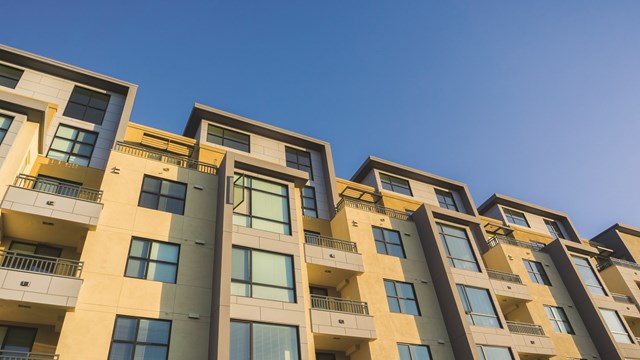
The good news is, after a fallow period in the depths of the recession, the construction industry in New York City is starting to come back. However, with that activity comes the potential for disputes and property damage, especially with neighboring properties. Lately some of the projects stalled in the economic downturn have come alive, and co-ops and condominiums next door to these projects have been calling me for advice on what to do to gear up.
One small co-op building found themselves with a Goliath next door. The construction project had been quiet for over one year, then suddenly shareholders started seeing a lot of activity. One day, the board president received a call from someone affiliated with the project, stating that they would need to “protect” the co-op building, and requesting a meeting to discuss an access agreement. This was a terrifying mixed message for the board. There was nothing about this project that would benefit the co-op, yet to some degree they couldn't say no, because such protection is required by law. So this quiet little co-op building called me in a panic about how to handle this situation.
My first order of business was to put together a team of experts to work with me in reviewing the plans for the project next door. Prior to that time, my client really had no idea of what the neighbor was planning to do, and how it would affect their property. Assembling such a team is essential if you are going to have any meaningful discussions with a neighboring developer. You need to fully understand the technical aspects of what they are planning to do, and fully understand if there is room for any counter-proposals. Frankly, developers are often hoping the neighboring building cannot (or will not) spend the money needed to do this investigation and determine what is really going on, and will pretty much agree to anything that does not sound too outrageous.
Show Us the Way
We started off with the developer inviting us over to “show us the plans.” The poor board president’s head was spinning as we heard for the first time what they were really proposing and how it would impact my co-op client’s building. The developer's rep was not eager to give us a copy of the very complicated plans, but we needed to review them ourselves to determine what the developers really wanted to do—and whether it was agreeable, trespassing, or something else entirely.
What we found were lots of issues and some very sloppy plans, requiring us to negotiate with the developer on issues involving access, lot lines and whether any compensation would be paid to my client. Over a period of months, the developer’s representative went from being very dismissive of the board to agreeing to pretty much everything we wanted. I am not saying this happens on every project, but you also don’t know until you try—and after you do all the preparatory discovery.
The biggest issue with neighbors doing construction work is the proximity of the properties and the fact that there will be banging, digging and underpinning for foundation work, which almost definitely will cause some degree of damage. Buildings in New York City—boroughs included—are very close together, and developers are maximizing their usable building space by building ‘in the face’ of neighboring buildings. Windows looking out over lot lines are often all but covered up. In some cases, the new buildings may be less than two feet from the building next door. This closeness can lead to problems down the road if repairs are ever needed, since there is not much space between the buildings to do the repair work.
A larger neighboring building may need to do work right next to or even beneath the neighbor’s smaller building, which can create huge cracks and even a “shift” in the building foundation. Windows may no longer close and the floors may become crooked. To the extent that the developer has construction crews that can jump in and fix these issues right away, there is some possibility of remedying the problem without litigation. However, more often than not, these situations lead to litigation, because the dollars involved in performing repairs can be so great that both sides need to have their insurance carriers involved.
Do a Pre-Construction Survey
Since many construction projects damage neighboring properties, the best advice is “a picture is worth a thousand words.” A pre-construction survey with photographs can be extremely useful in pinpointing when a problem occurred. These are issues that are best organized by legal counsel. There may also be access issues where the neighbor doing the construction needs to gain access to the neighboring property in order to “protect” it with scaffolding and netting. Even though there is a mutual interest in having “protection,” it does not always mean that the parties will agree on how it is supposed to be done. Sometimes the builders just move right ahead with these activities and the neighbors find out after the fact. Other times, they ask for permission via access agreements beforehand. Occasionally, the builder actually “takes” some of the neighboring property, or encroaches without permission. This is one of the most serious things that can happen and the most difficult to unravel. This is why surveys are so important.
Some neighbors try to withhold their permission to allow access. Generally speaking, if all that is needed is access to protect your building, the court is going to allow it, but there may be special conditions that must be taken into account. These agreements and the negotiations become more complex when the builder needs more than just protection. The builder may need to perform certain activities from the neighboring rooftop or property. He may need to “borrow” some of the neighbor’s airspace or store materials on the roof. This can lead to heated negotiations and sometimes to litigation.
A building that has been advised that construction will be commencing next door should be “well armed” with legal counsel and a team of experts to help understand what the neighbor is planning to do and whether there are likely to be problems. One homeowner found that the neighbor’s contractor had knocked down a small wall between the properties, which was actually a retaining wall. Soil started to fall and a stop work order was issued. It also raised a question about where the lot line was and whether a fence had been installed too far over on to the neighbor’s property. People who are not prepared find out about problems after the fact, then seek legal counsel.
Anyone in a situation where a neighbor is doing construction work should gear up and consult with knowledgeable construction counsel and be well-prepared for the process before the construction begins. It’s good advice to approach neighbors in a friendly fashion and try to smooth out problems before the work commences.
C. Jaye Berger is a Manhattan-based attorney specializing in real estate, co-op, condo, environmental and construction law.






Leave a Comment